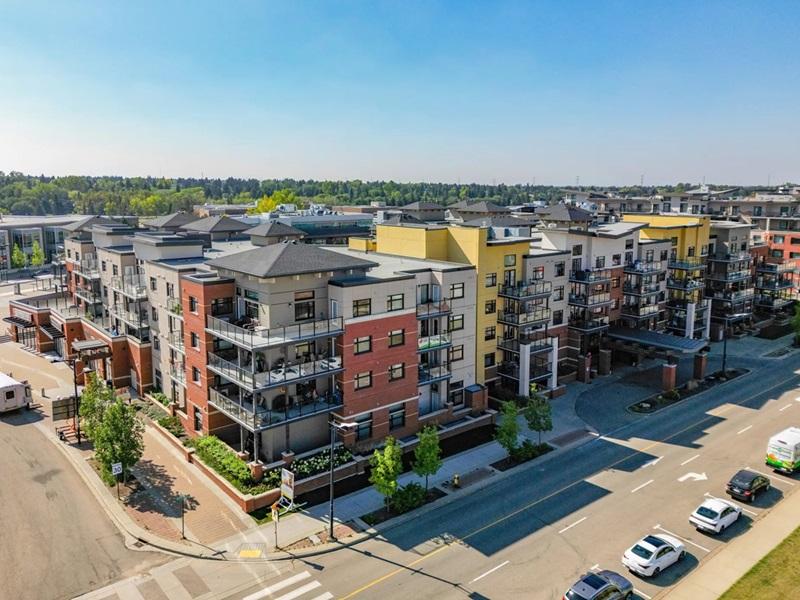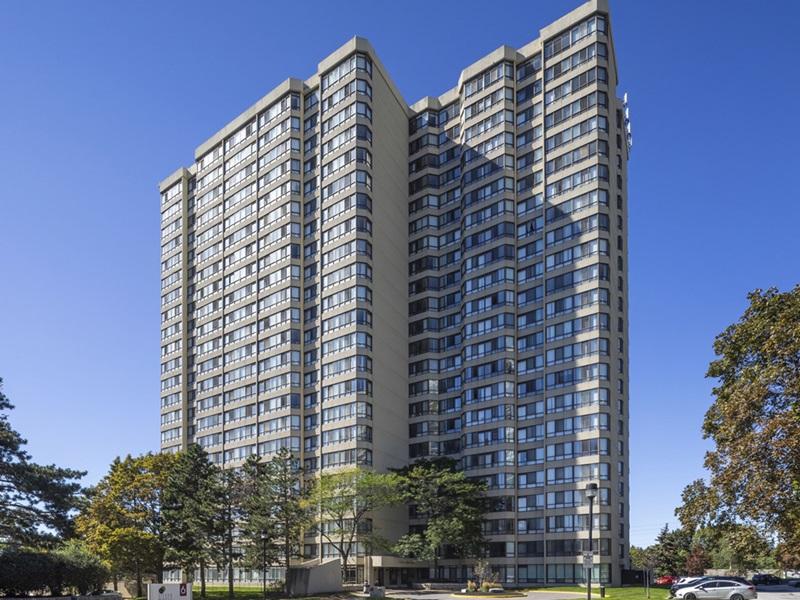
Barbara Lawlor, chief executive officer and broker of record for Baker Real Estate Incorporated.
The Greater Toronto and Hamilton Area (GTHA) housing market has been in flux throughout 2022 and different perspectives were shared during a recent Urban Land Institute Toronto webinar.
Jeanhy Shim, a partner at residential real estate consulting firm PMA360 and president of housing research and consulting company Housing Lab Toronto, moderated the panel discussion.
Shim was joined by:
• Andrew Brethour, executive chairman and broker of record for PMA Brethour Realty Group, a new home sales brokerage, development advisory and market research company;
• Bader Elkhatib, partner and senior vice-president of CentreCourt, which is responsible for 19 high-rise residential projects with approximately 9,500 units in the Greater Toronto Area;
• and Barbara Lawlor, chief executive officer and broker of record for Baker Real Estate Incorporated, a pre-construction residential sales and marketing firm.
Pauline Lierman, Ontario and Quebec market research VP for Zonda Urban, which tracks owned and rented multiresidential and townhouse product in six major Canadian markets, kicked things off with an overview of what’s happening in the GTHA.
Condominium activity
New condominium and townhouse sales reached a peak of 10,257 units in Q4 2021, but dropped to 6,842 units in the second quarter of this year.
There are approximately 93,000 condo apartment units under construction in the GTHA. About 20 per cent are expected to be completed this year.
Lierman said condo projects generally sell most of their units in the first two to three weeks after going on sale, so looking at them by month provides an accurate representation of the market.
Her research showed the condo sales absorption rate was 86 per cent in January, steadily declined to 41 per cent in June as interest rates rose, then rebounded to 56 per cent in July.
Lierman attributed the July increase to some projects that were priced attractively in places with 905 area codes outside of Toronto’s core. She noted 905 markets now represent about half of condo sales in the GTHA.
New-launch condo unit per-square-foot price increases from Q2 2021 to Q2 2022 were 19 per cent in the GTHA, 10 per cent in downtown Toronto, 20 per cent in the 905 area code, nine per cent in Etobicoke, 24 per cent in Mississauga and 15 per cent in Vaughan.
Per-square-foot prices were $1,302 in the GTHA, $1,597 in downtown Toronto, $1,197 in the 905 area code, $1,239 in Etobicoke, $1,335 in Mississauga and $1,243 in Vaughan.
The average condo launch price in the second quarter was $1.106 million in downtown Toronto, $956,428 in Toronto West/York, $768,180 in Etobicoke, $869,948 in Mississauga and $819,137 in Vaughan.
The proportion of monthly income required for a condo mortgage payment was 66.4 per cent in Toronto in May.
That compares to 19.7 per cent in Edmonton, 23.8 per cent in Calgary, 51 per cent in Hamilton, 57.8 per cent in Victoria and 68.8 per cent in Vancouver.
That comparison led Lierman to remark: “We’ve actually seen a lot of interest in the Calgary market coming from Toronto investors.”
Purpose-built rental apartments
The GTHA vacancy rate for purpose-built rental apartments, constructed since 2010, reached a high of 19.6 per cent in the second quarter of 2021 and has since steadily declined, hitting 8.6 per cent in this year’s second quarter.
That figure includes about 2,000 units that were in the pre-leasing or leasing stages, and the vacancy rate for stabilized projects was one per cent. Lierman said that’s a critically low level that would be healthier at two to three per cent.
There are approximately 17,000 purpose-built rental apartment units under construction in the GTHA. About 5,000 are expected to be completed this year.
Rents reached a low of $3.28 per square foot in the second quarter of 2021 and rose to $3.80 per square foot a year later.
The proportion of monthly income required for a Toronto studio apartment with an average rent of $2,039 was 38 per cent in the second quarter.
Those respective numbers rose to $2,460 and 46 per cent for a one-bedroom, $3,447 and 64 per cent for a two-bedroom, and $4,732 and 88 per cent for a three-bedroom unit.
Those figures are significantly higher than in Edmonton and Calgary and, apart from three-bedroom units, also higher than Vancouver.
“We’re seeing almost 20 per cent rent growth within a six-month period,” said Lierman.
Condo pricing
Brethour said unsustainable and irrational exuberance contributed to high housing prices late in 2021 and early this year, but he expects those increases to be eliminated now that interest rates have increased and buyers have become more cautious and restrained.
The development industry has also taken a step back as it considers how to reposition itself in this new environment, he added.
High-rise pricing hasn’t dropped as much as for low-rise, and Brethour expects that trend to continue. He thinks the market will bottom out in October or November, but said it could take four or five years for prices to return to the same levels as this past February.
Elkhatib said condo launches are still moving forward and units are being sold, but at a slower pace than before, due to uncertainty in the market and factors including rising construction, interest and development charge costs, as well as a lack of available labour and supplies.
Elkhatib said CentreCourt has nine buildings with approximately 5,000 units under construction and virtually no inventory to sell. Its corporate philosophy is to sell all of its product upon launch.
CentreCourt is still looking for new development sites and will be launching new condo projects next year.
Elkhatib said some developers need to sell units at the original high prices they planned on to make margins work, so they can either move forward with their project or wait for a rebound.
Other developers who were sitting on land can either pause launches or move forward with feasible developments at price points that still make economic sense.
Lawlor said it used to take three months to get a developer to construction from the launch of sales and that has now increased to six to nine months.
Purchase incentives
Lawlor said falling home and condo prices have affected the resale market much more than for new construction condos and launches don’t need to be laden with incentives.
She was involved with this summer’s sales launch of the 73-storey east tower of the Frank Gehry-designed Forma condos in downtown Toronto, at $2,000 per square foot.
Where sales incentives are occurring, Lawlor said, are with “tempo sales” where developers are trying to sell enough units to get construction financing or to feel more comfortable in moving forward with construction.
Even then, she said the incentives aren’t huge.
“It’s a great time for hard-core real estate investors,” said Lawlor. “They understand that, in many cases, they’re purchasing units that will close in anywhere from five to eight years.
“Rents in Toronto are also music to the ears of the investors, not so much for many who are trying to rent, but they’ve reached an all-time high, which is hugely encouraging for investors to consider new construction condominiums.”
Purchase incentives can include credits on closing and extensions on deposits, among other things. Brethour said incentives are rampant for new low-rise housing, but many such projects have been pulled off the market.
Elkhatib added incentives are also sometimes dangled for large and expensive suites that typically sell to end-users 12 to 18 months away from occupancy.
“My opinion is you price right out of the gate,” said Elkhatib. “You shoot your shot and that is your biggest value driver. If you get that wrong, then incentives become the tool that self-correct. But, it’s a slippery slope from there.”
Construction costs
Shim pointed out construction doesn’t merely involve hard costs such as materials, but also soft costs including municipal development charges, levies, fees, interest payments on construction loans and new policies like inclusionary zoning.
She said these costs have doubled or tripled in some cases recently and asked the panellists if they thought they had peaked.
Elkhatib said 15 to 20 per cent annual increases in construction costs have been typical over the past three or four years and he believes they’ll continue to climb due to higher labour costs and supply chain issues.
Development charges are up 50 per cent in Toronto and other municipalities, and parkland charges will be rising two to three times their current rates in Vaughan and other municipalities in the coming years, according to Elkhatib.
“I think what we’ll see is a delay or deferment of a lot of projects that just can’t make the numbers work,” said Brethour. “And as a result you’ll see the order books from the labour, and to some degree the material, side subside and prices adjust.
“This will take about a year. We won’t see it until maybe the summer of next year.”
Brethour said government taxes from different jurisdictions now account for more than $200,000 for a low-rise house, which is unsustainable if new supply is going to continue to be delivered.
Population growth will continue to drive housing demand beyond available supply and Lawlor believes that will keep pushing prices up.
Outlook for the future
Elkhatib said Toronto itself, as well as its projected population and employment growth, provides him with optimism.
“We are a place that people want to move to, that they want to invest in and that they want to put roots down in. That has been and will continue to be the most fundamental driver of our business in the immediate and long term.”
The lack of affordable housing stock, however, remains a concern for Elkhatib and Brethour.







